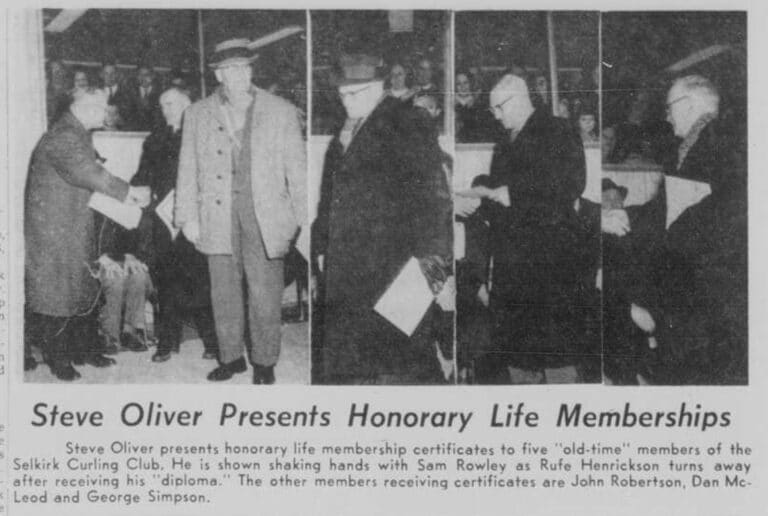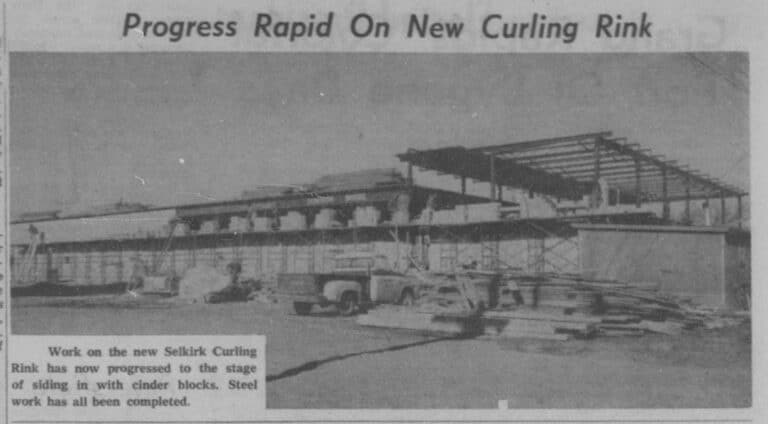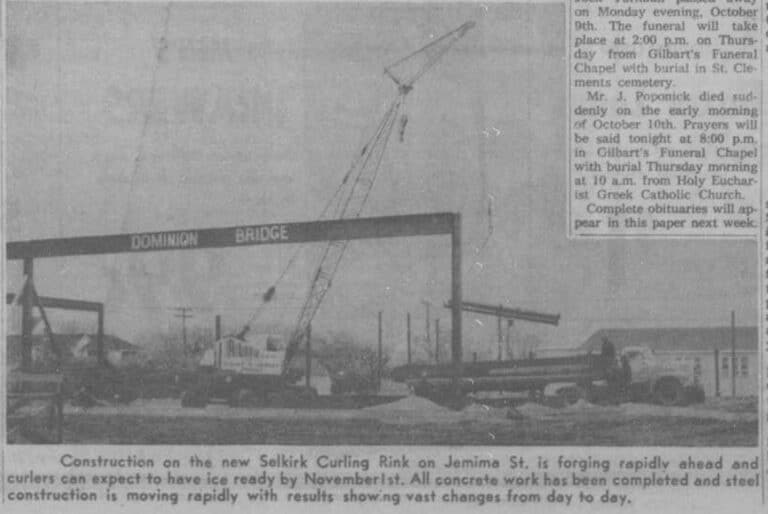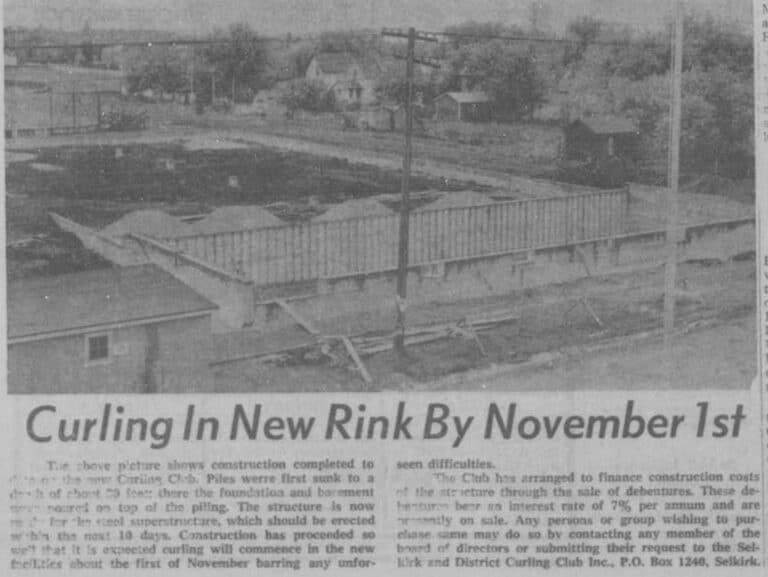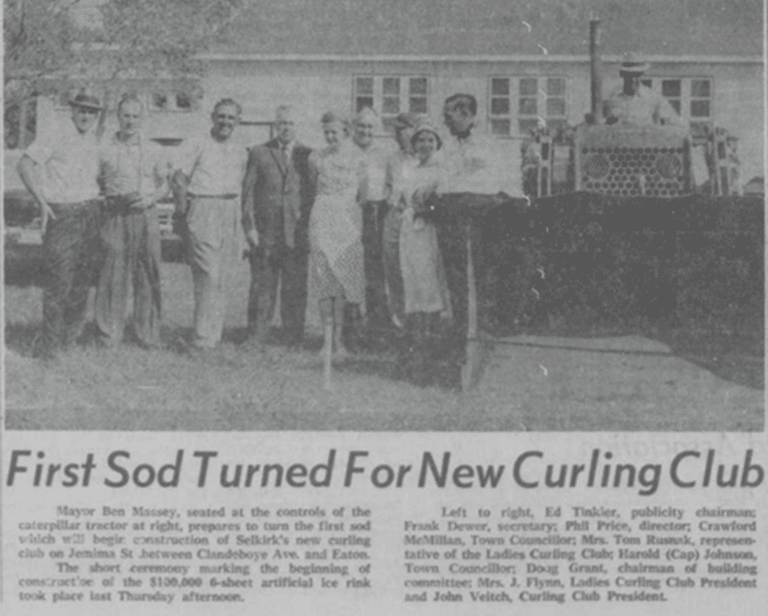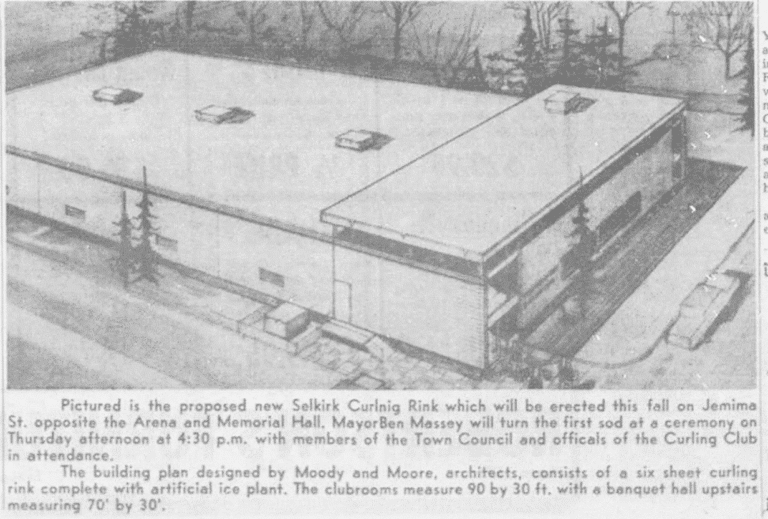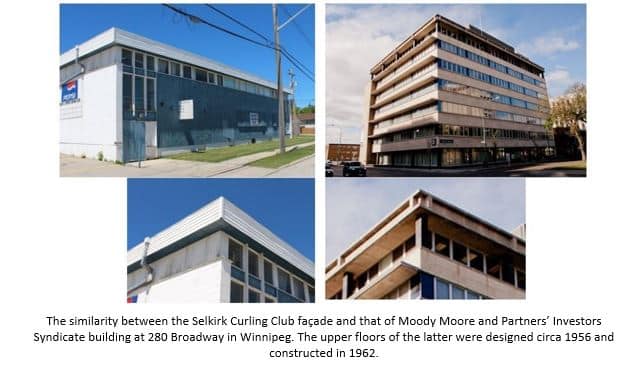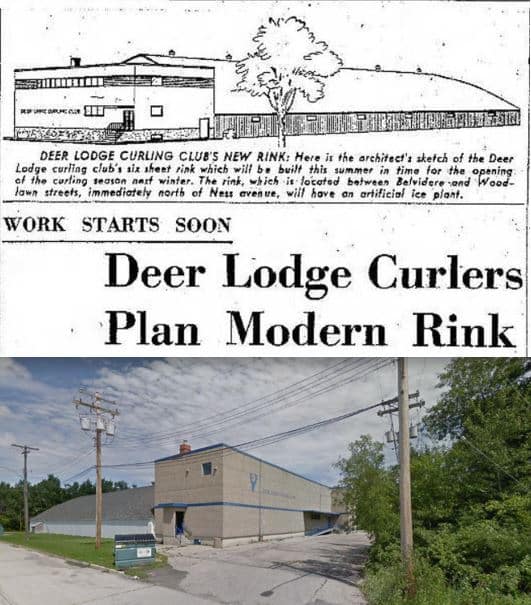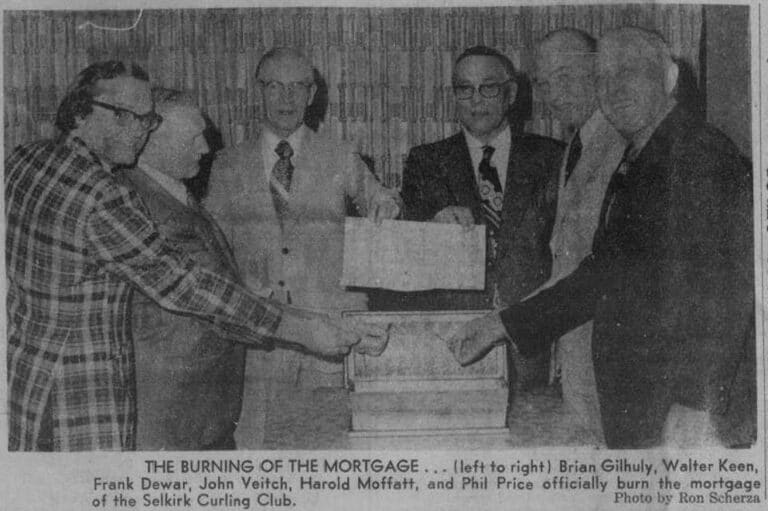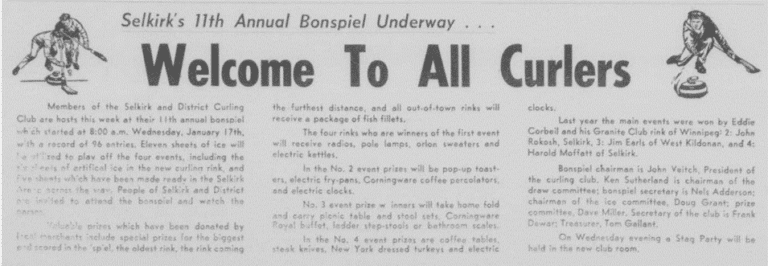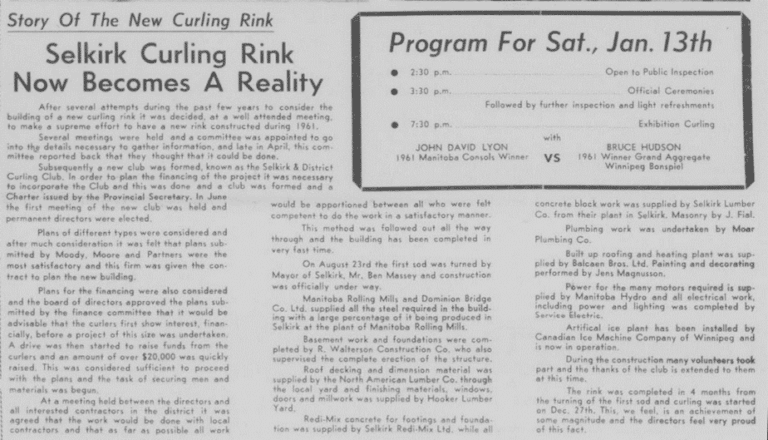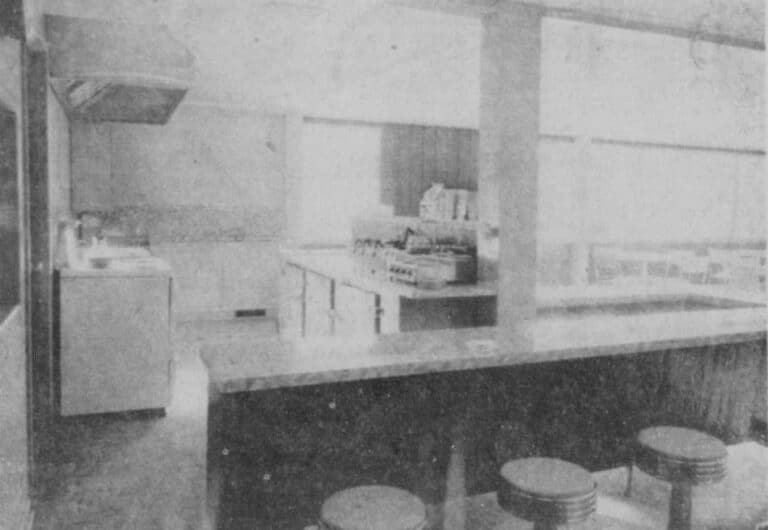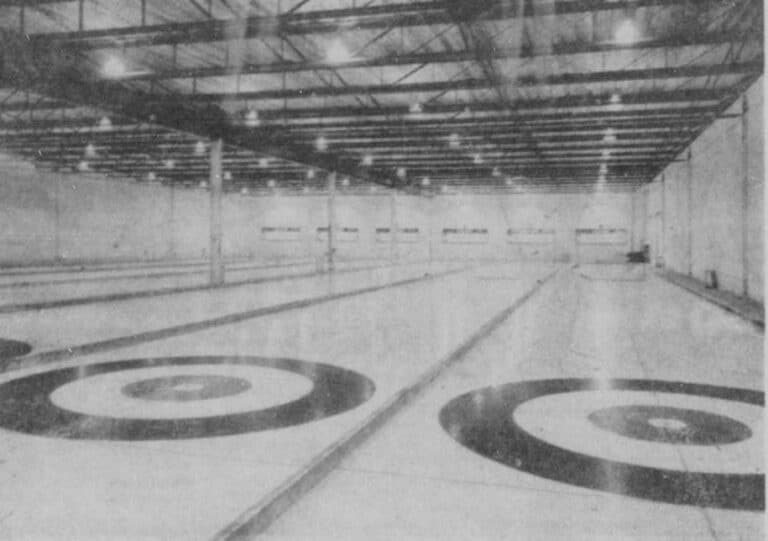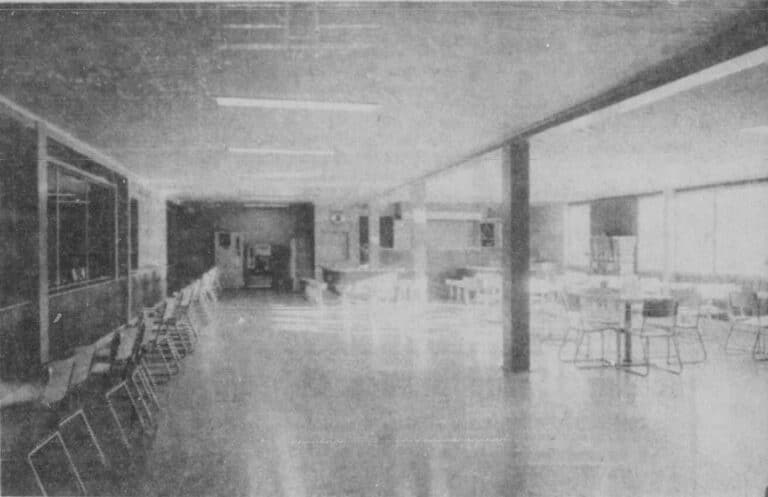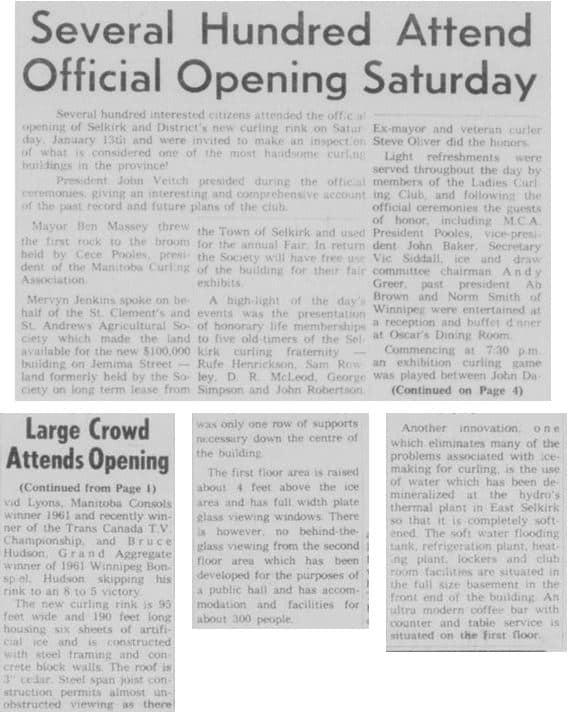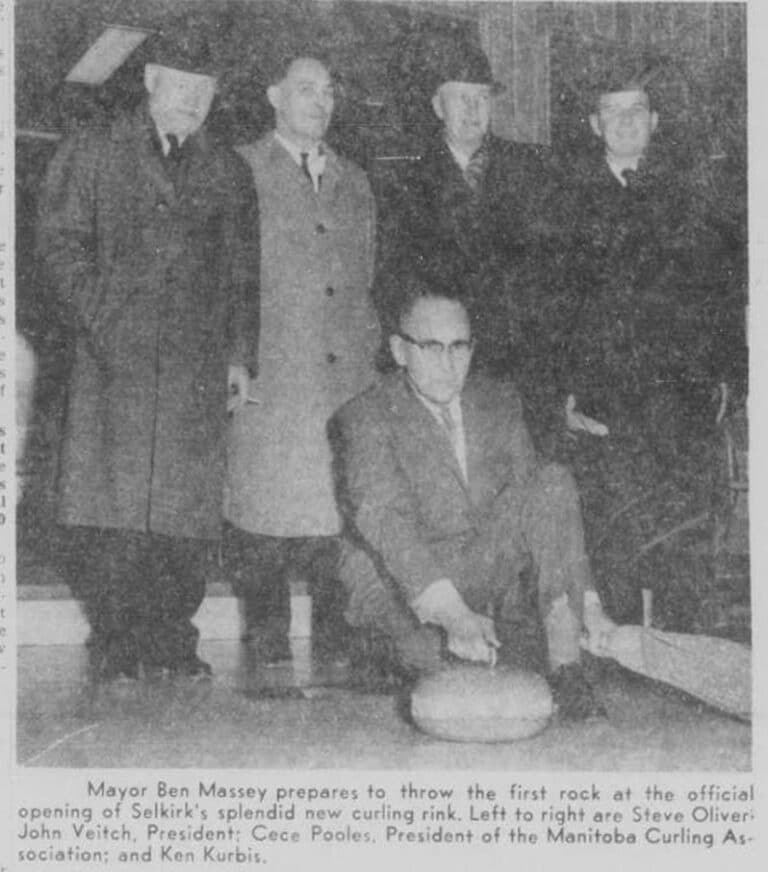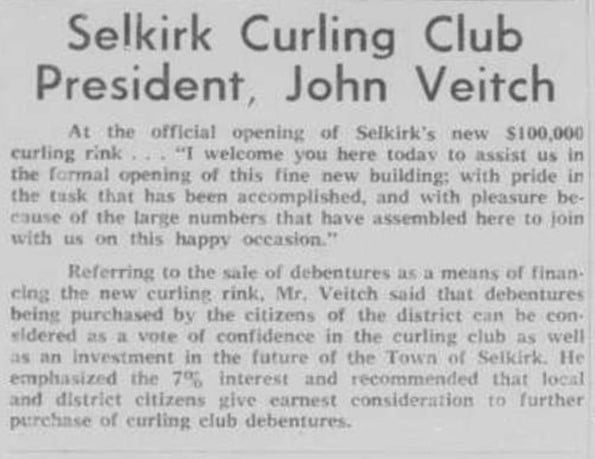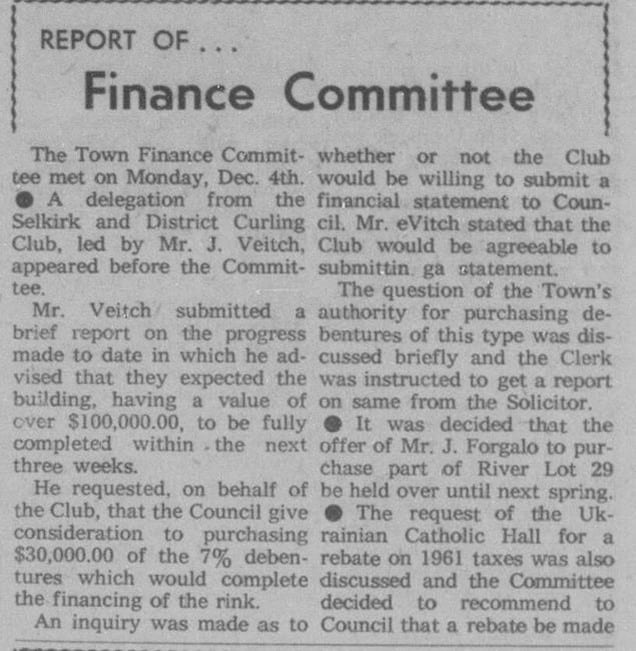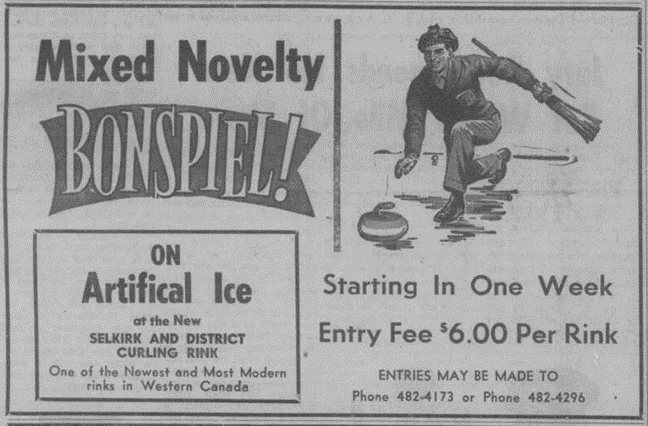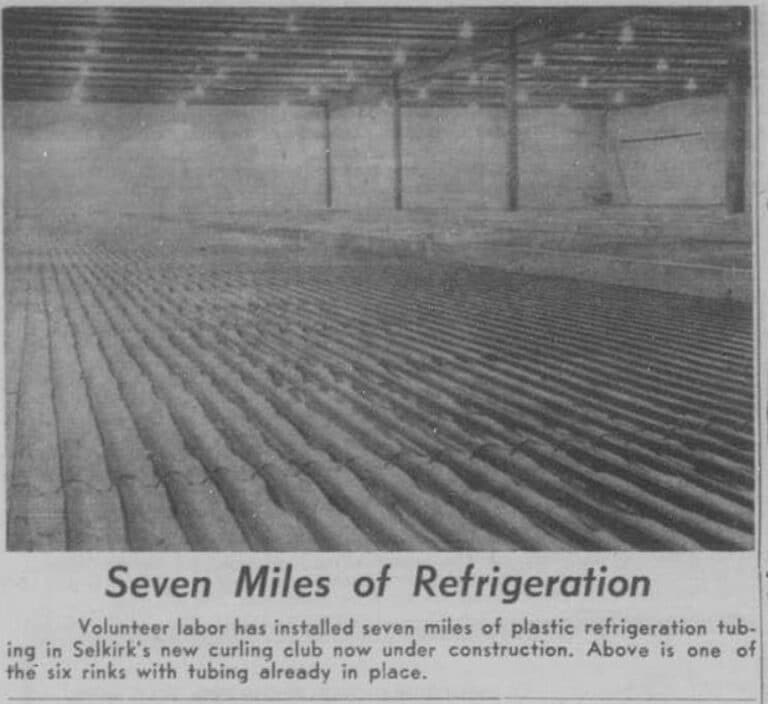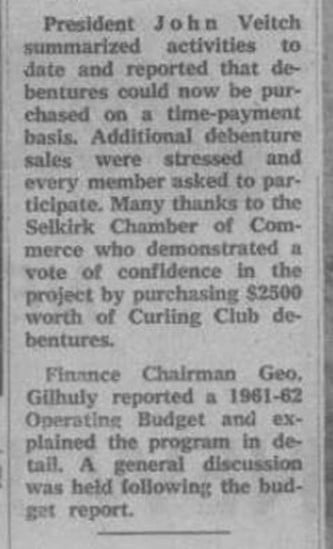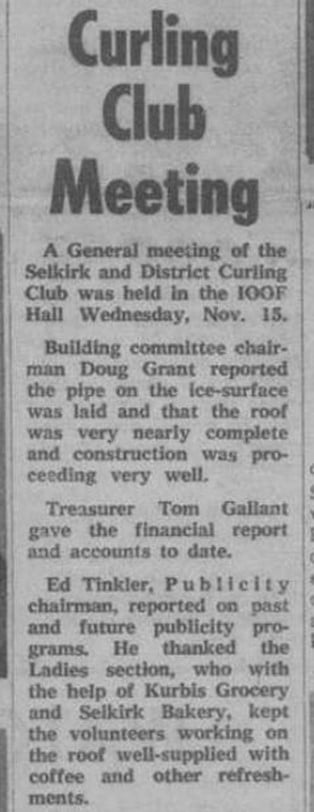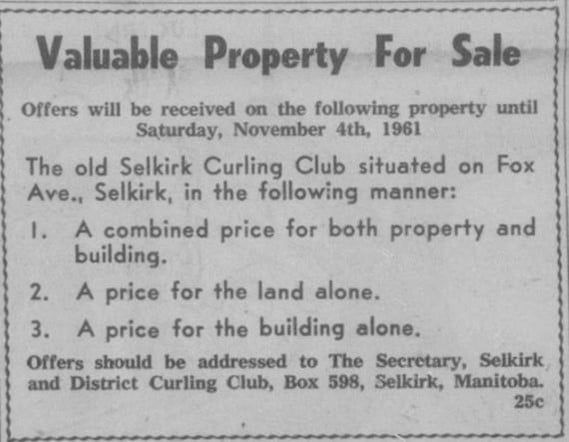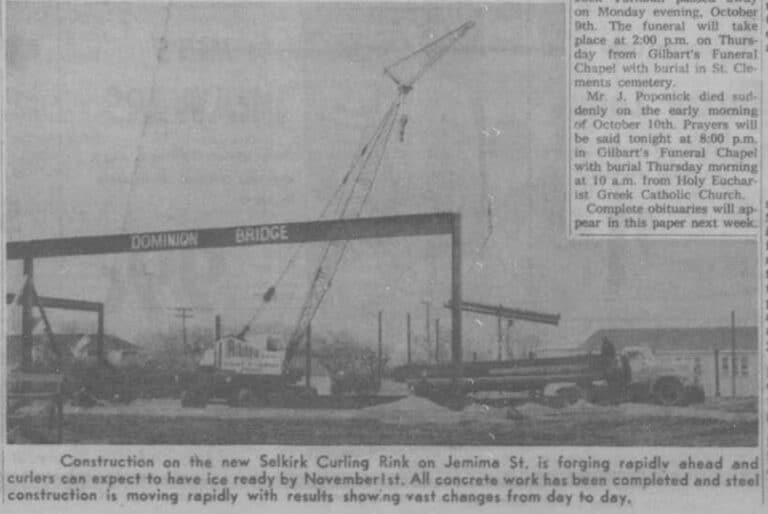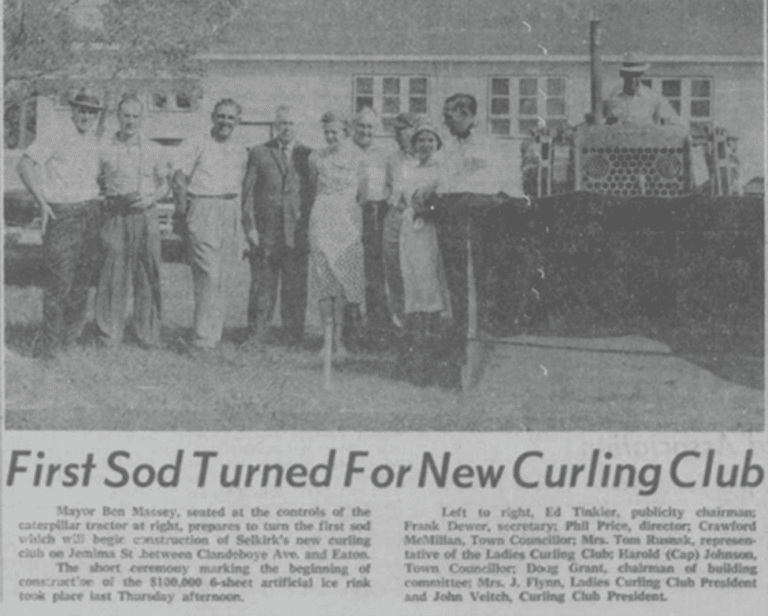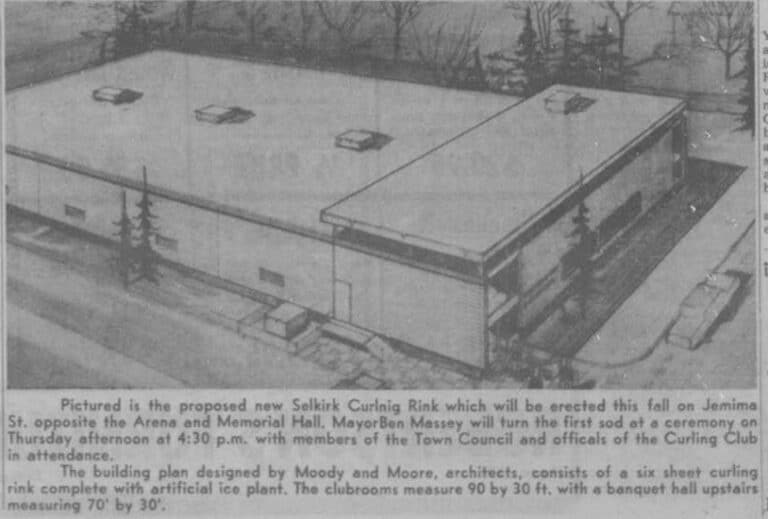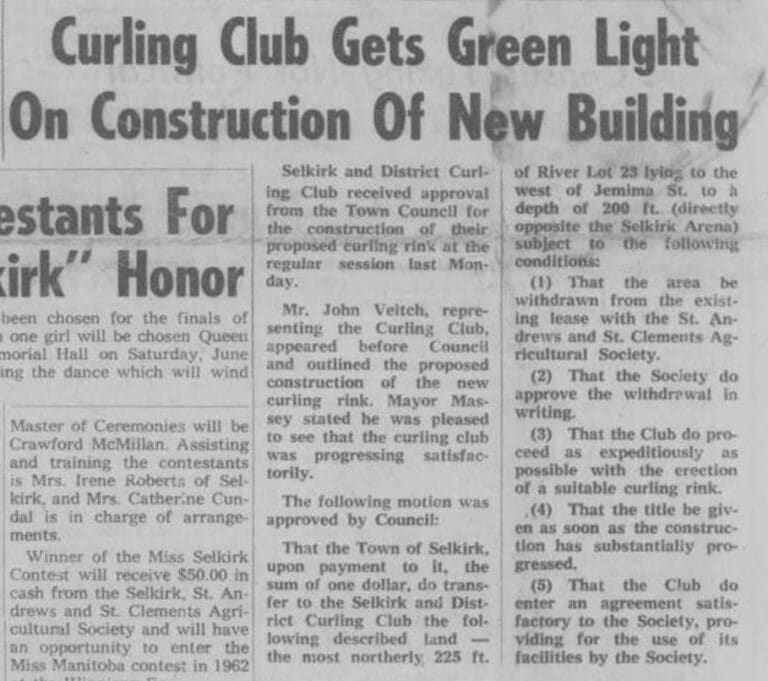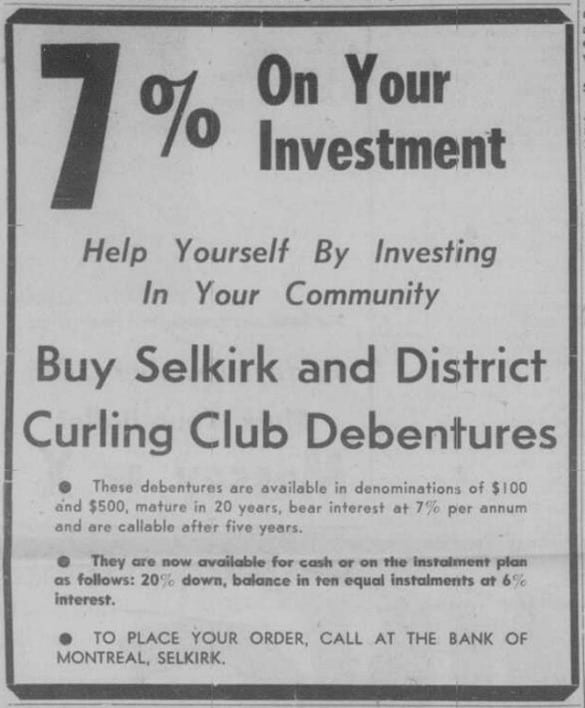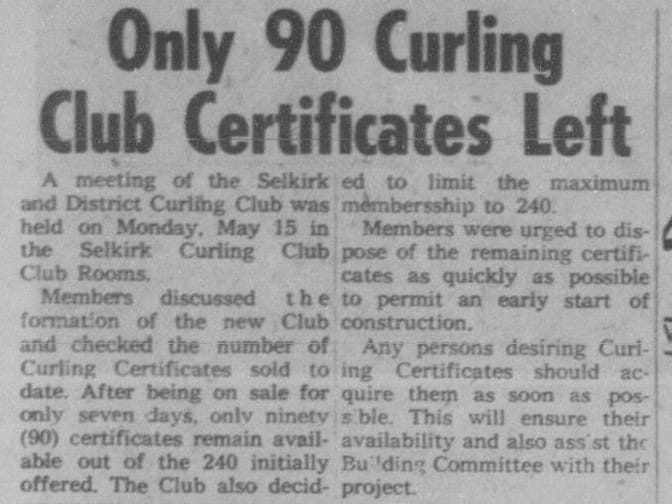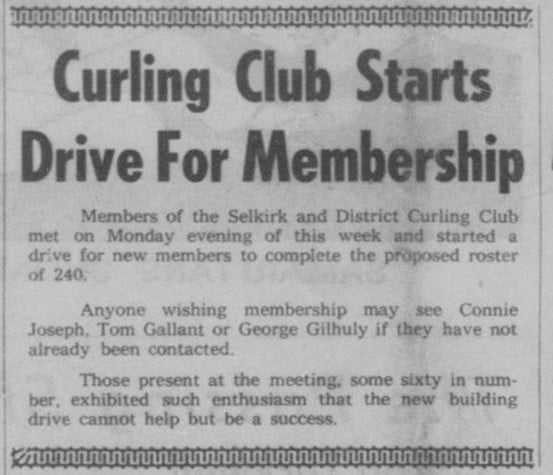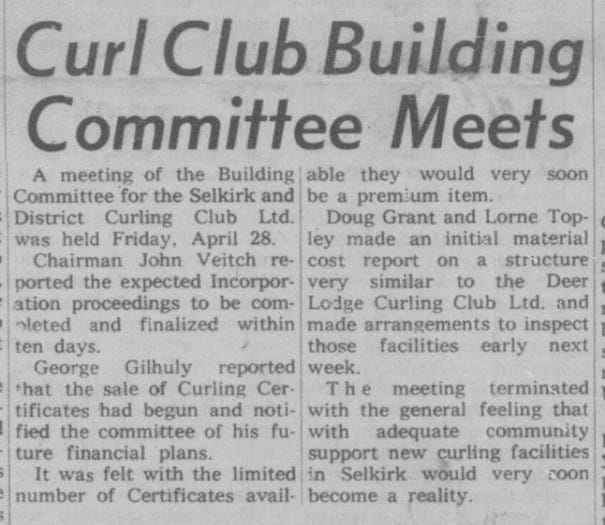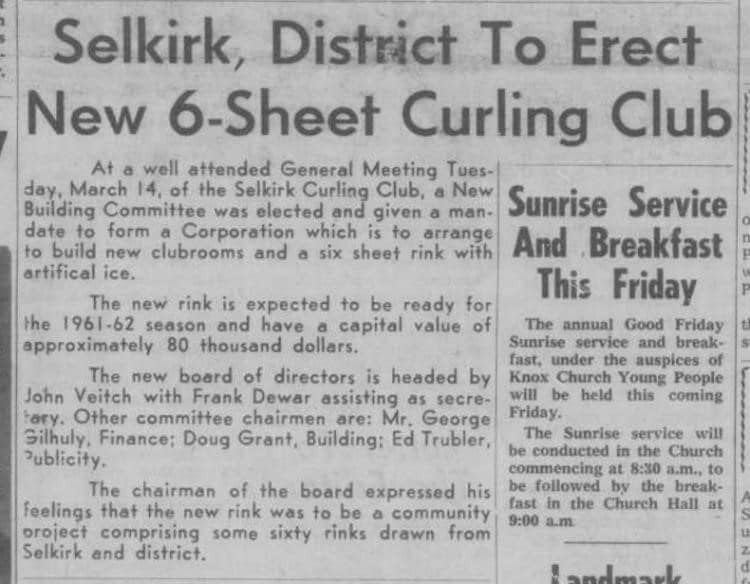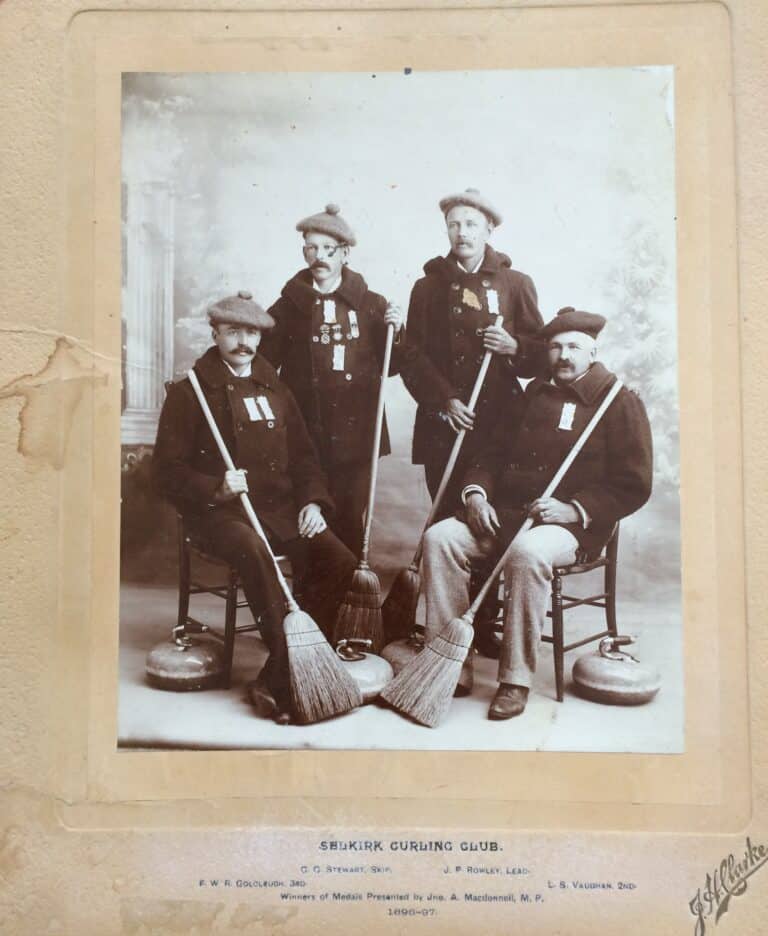Curling’s popularity continued to grow after the Second World War, and several new rinks were built in the region including Winnipeg Beach in 1952 and Gimli in 1953. Selkirk also wanted to replace its ageing building but would have to wait a few more years.
The Selkirk Curling Club formed a building committee on March 16, 1960, which was tasked with creating a corporation that would arrange to build new clubrooms and a six-sheet rink with artificial ice in time for the 1961-62 curling season. This would replace the four-sheet rink on Fox Avenue adjacent to the Alexandria Rink, which opened in December 1937. The new Selkirk and District Curling Club Ltd., as it was called, was headed by John Veitch.
The New Building
After visiting newer facilities, the club decided that their new building would be modelled after the Deer Lodge Curling Club which opened in Winnipeg in 1957.
The project architect was Moody Moore and Partners of Winnipeg, which by this time was known more for constructing high-end office buildings in Winnipeg’s downtown (such as the Sovereign Life and Investors Syndicate buildings on Broadway). It is likely that Moody Moore designed the Deer Lodge Curling Club, which is how they got involved in the Selkirk project.
The land that the new rink would be built on was a 225 ft x 200 ft (69 m x 61 m) lot carved out of the Selkirk and District Interlake Fairgrounds. It was owned by the Town of Selkirk who had a long-term lease agreement with the St. Clements and St. Andrews Agricultural Society to use it. The town agreed to sell the land to the club for $1 if the Society agreed to break the lease. It did, with the provision that it be allowed to use the building as exhibition space during the annual summer fair.
The estimated cost of the new facility was around $100,000. To raise the funds, the company sold a limited number of ‘curling certificates’ which were a type of super membership that gave owners a vote at general meetings and a say in club operations. These were over and above the regular annual curling fees. The number of certificates was limited to 240 and they charged $100 each.
Fundraising
The most important phase of the fundraising campaign was to sell up to $100,000 worth of 20-year debentures that yielded a 7% return per year. These could be bought in denominations of $100 or $500 at the Bank of Montreal.
With fundraising efforts underway, the town council gave the club the green light to begin construction. A sod-turning ceremony with various municipal and curling club officials took place on the afternoon of August 17, 1961.
Building Investors
Rather than a formal tendering process for the building construction, the club invited contractors from the region to attend a meeting where the detailed building plans were presented and discussed. The club felt that a collaboration between interested suppliers, builders, and installers would ensure that local companies could be involved in the project and that they would work together to keep costs down.
The plan worked, as the vast majority of companies who contributed to the building process were local. Many even provided goods and services at a discount. Some major components of the building were also manufactured in Selkirk, such as the reinforcing and long-span steel joists by Selkirk Rolling Mills which were installed by Dominion Bridge of Winnipeg, and the concrete blocks supplied by Selkirk Lumber Co.
Dimensions and Building Style
The new steel frame and concrete block building measures 90 feet wide by 190 feet long (27 m x 58 m) and contain six sheets of ice.
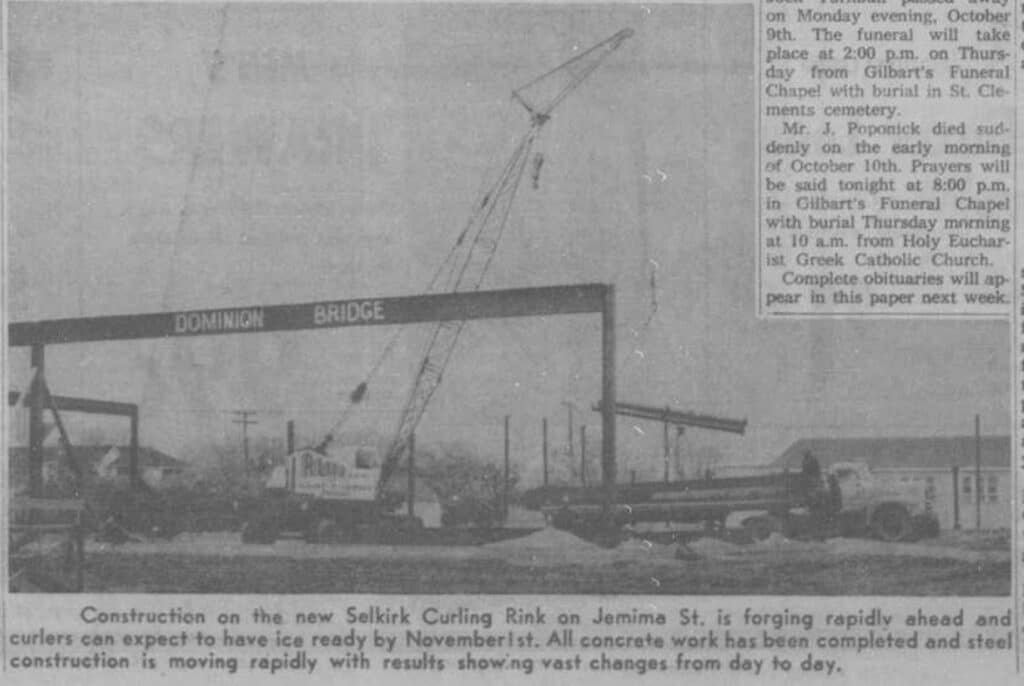
The clubhouse portion measures 90 ft by 30 ft (30 m x 9 m) and consists of two storeys and a basement. The main floor includes a viewing lounge, offices, and a canteen. The top floor is a 300-person capacity banquet hall. The basement contains the locker rooms.
The Jemima Street building has some nods to Moody Moore’s period stone and glass buildings in downtown Winnipeg, such as the slightly overhanging roofline above a narrow, horizontal band of windows. Large window bays at each end of the building bathe the internal stairwells in natural light, something not seen in most curling rinks (which normally have windowless fronts).
Work progressed rapidly on the site under supervision of main contractor R. Walterson Construction of Selkirk. By mid-September, the piles had been driven and the foundation was being dug. The steel frame was erected by mid-October, which was followed by the masonry work. The building was enclosed in early November allowing for the internal fittings to begin.
Another cost-saving measure for the club was the use of volunteer labour. Jobs such as applying the roof protection and laying the seven miles (11 km) of in-ground refrigerant tubes were done at ‘work bees’ under professional supervision.
Completion and Grand Opening
The building was completed by mid-December and curling began on December 27, 1961. As expected, the new rink attracted many new participants to the club, with 45 men’s, 13 women’s, 12 junior, and 24 mixed teams registered to start the season.
The official opening of the Selkirk and District Curling Club took place took place on the afternoon of January 13, 1962.
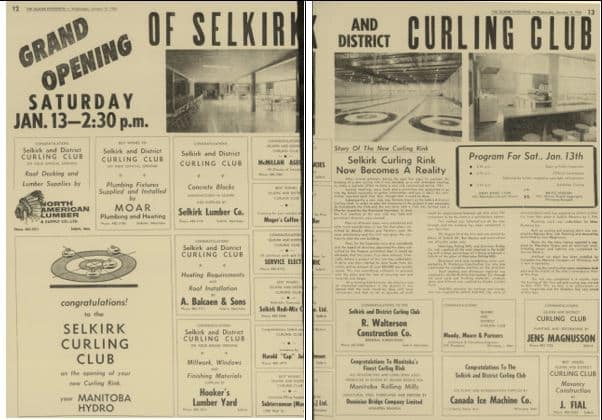
Company chairman John Veitch and curling club president Cece Pooles welcomed the crowd who came to tour the facility. Mayor Ben Massey threw the ceremonial first rock. Later that day there was an exhibition game between John David Lyon, the reigning Manitoba Men’s curling champion; and Bruce Hudson, the Winnipeg champ.
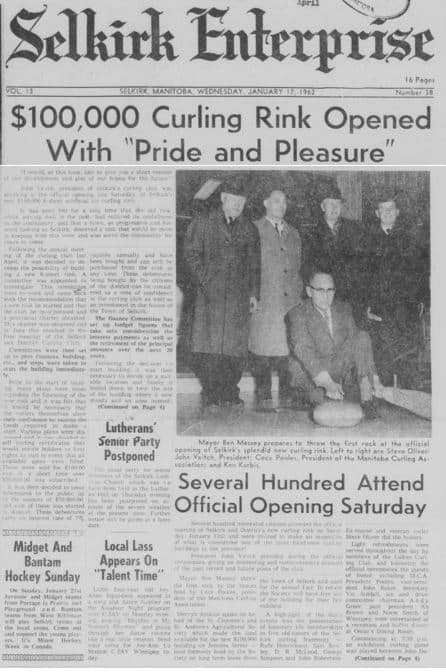
By all accounts, the club was a great success. Not only did it have a record number of curlers, it sold 221 certificates and $70,000 worth of bonds, the interest on which was paid off thanks to regular fundraising events put on by the club’s membership committee. The Bank of Montreal financed the remaining $50,000 needed to build and furnish the building.
The club held a mortgage burning party on November 16, 1974 in its banquet hall. With the rink paid for, the Selkirk and District Curling Club Ltd. turned over ownership of the building to the Town of Selkirk and, in turn, signed a long-term lease agreement to use it for $1 per year.
Selkirk Curling Club Collection
Sources
Selkirk Enterprise, 1952, 1961, 1962, 1974


